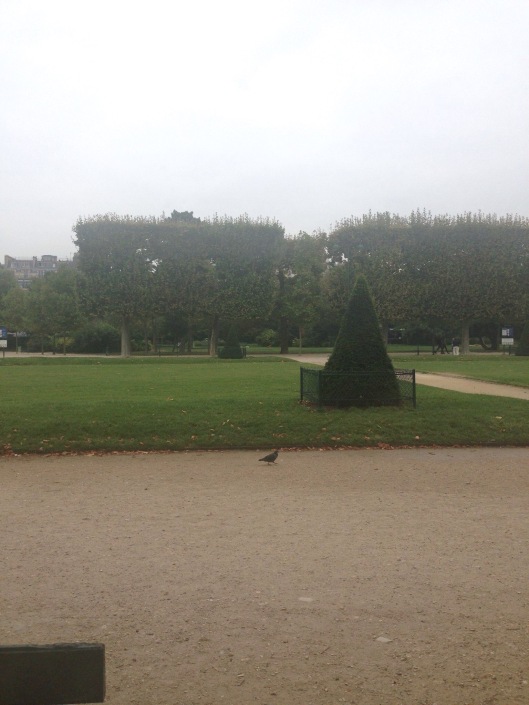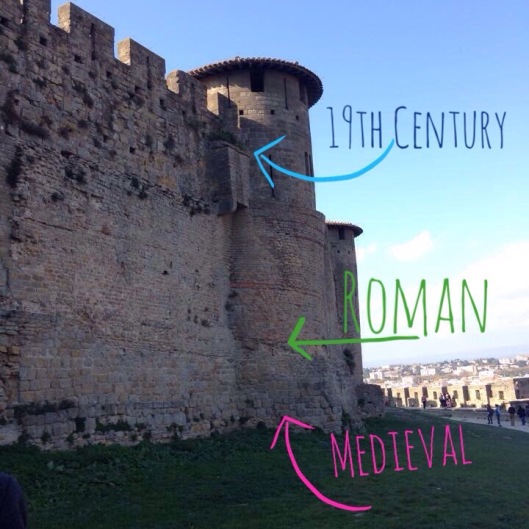Bonjour Mes Amis,
Life abroad is not all excitement. Sometimes it’s just life but in a different country where you don’t speak the language very well. This week has been one of those. It’s been relaxing and I’ve been doing a lot of knitting. Thus I’ve had a lot of time to think.
I’m not taking any history classes here in France and I miss studying history. I miss sitting in the library and reading old medieval documents or comparing secondary sources (I know, it must sound so dull to most people). I’ve felt sort of melancholy over it, listening to my friends back home talk about their classes and what they’re learning. But this week, during all my knitting and thinking, I’ve realized that even though I’m not actively doing history in an academic way I’m living in history in a way that I’ve never had the chance to do before. After all, in every post I’ve written for you I’ve talked extensively about history, it’s just a different kind of history learning.
Instead of learning about history I get to witness it.
I remember the first day in Paris we took a tour of the Luxembourg Garden (Le Jardin de Luxembourg). Our tour guide was walking us up to the gates and explaining to us that we would be seeing two different kinds of gardens. “There are the British gardens, wild and unkempt,” She said in a very Frenchy tone that made me question whether she liked British gardens at all, “and there are the French gardens, well groomed and very structured.” She pointed out the British garden when we arrived and indeed it was a vast plot of lawn with tufts of wildflowers and overgrown ferns and everything you would expect from a British garden. Then she pointed out the French garden which had two lines of trees perfectly even and parallel, the trees cut neatly into perfect triangles, no branch out of place.

The first thing I thought of that day was my Western Civilization class. My professor, a old grouchy man who is perhaps my favorite professor to date, explained to us that in the 18th century (the 1700s) Europeans believed that they needed to control nature. This century is commonly called the age of reason and people believed that nature was wild and needed to be tamed. If people didn’t tame nature then it would engulf them all. Therefore, in the 18th century all gardens were like the French gardens. Very orderly.

Yet then there was the industrial revolution and nature became less important, factories and cities were important. This was the 19th century and with the rise of industry came a backlash from artists and they had their own revolution, a cultural revolution that we like to call the Romantic revolution. Primary this was in England and the artists believed that Nature needed to be wild and people couldn’t, and shouldn’t, try to tame that. Thus the birth of the English garden.

It was fascinating to see these two schools of thought in one area but also I was struck by the tour guide’s words. She clearly preferred French gardens over English gardens. And the more I explored France and saw all their square trees I realized that France had never really grown out of the 18th century and the desire to tame nature. It was my first taste of living history that I had learned about in school and it was all about gardens!
I’ve had these moments a lot where I witness things I’ve learned about in classes in France and it makes me appreciate history so much more.
But France has also changed one fundamental way that I view history. History is taught in moments. I’m sure you guys have experienced this. In school it’s just easier to teach a window of time, it would be impossible to do it over wise.
For instance, I remember in school learning about Versailles. I learned that it was built by Louis XIV, that it was grand and that during the French Revolution the royal family was forced to move away. Yet being in Versailles you don’t just see that window of history. You see the build. You see hints of when it used to be a hunting cabin and you see Louis XIV’s designs and you see moments from when Versailles was used to create treaties and now when it’s used for galas and balls.
It’s like that everywhere here. Things aren’t nearly as old or static as I expected them to be. Like the Chateau in Pau which was built on three times in three very different centuries. It wasn’t just built and left as is in the 1300s. No, people added on, like we do now to our houses and buildings. They updated it for modern comfort or added defensive positions when needed.
Carcassonne was like that too. Remember I talked about how the Romans were the first to build the walls? Well, some of those Roman walls are still around but the majority of Carcassonne was actually rebuilt, redesigned, in the 19th century (far past the Medieval area that Carcassonne is always touted as being from) when France was working on trying to rebuild it’s decrepit history.

Our tour guide in Carcassonne made a joke about it. He was explaining that people used the stones from the walls in Carcassonne to build their houses. “Back then people didn’t care about historical preservation — preservation was for people not walls.”
It’s weird. Going from a classroom where, in theory, things stay the same to a country where things are constantly being built and rebuilt, added on to and torn down. It makes so much sense, now that I’ve seen it. Who cared about the legacy of a castle when they just needed to survive? Europe isn’t a very large place and there isn’t a lot of new land to build on. Sometimes people need to choose between a historical monument and the ability to house or feed their populations. Sometimes buildings need to added on to so that they don’t fall down. Sometimes cities catch fire and everything needs to be rebuilt.
In France I’ve come to see History as more than just windows into a time and place. I’ve come to realize that just because something was rebuilt in the 19th century doesn’t make that place less special or real or important. History is breathing and living and changing and here in France I’m getting the change to witness and be a part of that process. It’s magical.

I liked the first photo that you took i think it is amazing
Me gusto la fotografia que tomaste creo que esta fabuloso
LikeLike
I liked the pictures you took i think they look amazing as always.
A mi me gustaron las fotos que tomaste yo creo que se ven fabulosas com siempre.
LikeLike
a mi me gustaron las fotos que tomastes
i liked the pictures you took.
LikeLike
wow! incredible pictures I bet that food was the best because it looked amazing.
LikeLike
wow
LikeLike
wow that park looks so pretty!!
LikeLike